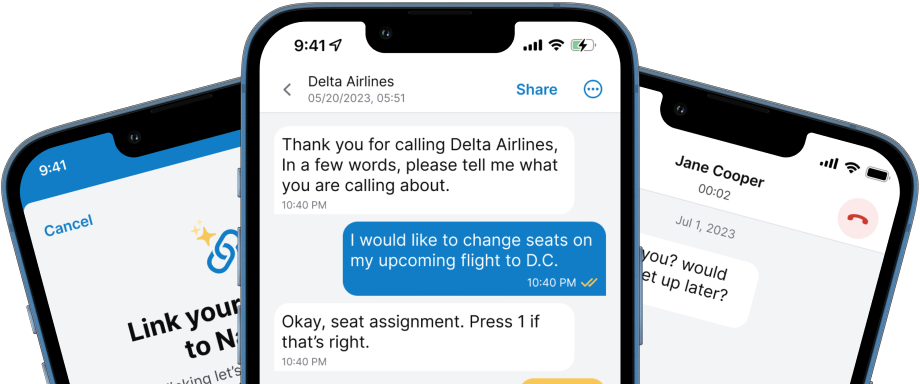Understanding Hidden Hearing Loss: Early Diagnosis & Prevention
What is hidden hearing loss, how to diagnose and prevent it on time. Click here to learn this and more in our insightful article!

Have you or a loved one experienced hearing loss? You probably know how challenging it is to find the right solution to improve your quality of life, especially when your condition is misdiagnosed.
If separating speech from noise is difficult in an environment with competing sounds, this is just one of the many challenges of hidden hearing loss. Keep reading to learn the impact of this often undetected condition and uncover the importance of early diagnosis and timely intervention.
What is Hidden Hearing Loss?
People with hidden hearing loss typically ask themselves: “Why was my hearing test normal, but I can’t hear?”
Hidden hearing loss, also known as invisible hearing loss, is a type of hearing impairment often missed or undiagnosed through conventional hearing tests because these focus on issues within the ear rather than the nervous system.
Hidden hearing loss is characterized by the damage or loss of synapses (connections) between the inner hair cells and the auditory nerve fibers in the cochlea, responsible for transmitting sound signals to the brain.
The condition uses the term “hidden” because a person with hidden hearing loss typically struggles to hear in noisy environments. Yet, results appear within the normal range during an audiogram or hearing test.
However, if the audiologist also conducts a speech-in-noise test, which simulates a noisy environment, the poor results indicate hidden hearing loss.
Early Signs and Symptoms of Hidden Hearing Loss

Hidden hearing loss can be challenging to detect as the symptoms are not always obvious. However, here are 5 common indicators:
- Difficulty understanding speech in noisy environments: People with hidden hearing loss may struggle to follow conversations in places with background noise, such as crowded restaurants, busy offices, or social gatherings.
- Trouble hearing specific consonant sounds: Certain consonant sounds, such as "s," "f," or "th," may be challenging to discern, which can lead to misunderstandings or misinterpretations of spoken words.
- Fatigue or increased listening effort: People with hidden hearing loss may find it exhausting to concentrate and strain to hear in challenging listening situations.
- Relying on visual cues: To compensate for the difficulty in hearing, people with hidden hearing loss may rely more on lip-reading or observing facial expressions and body language to understand what others are saying.
- Normal hearing test results: Hidden hearing loss often does not appear on standard hearing tests, such as pure-tone audiograms, which primarily measure sensitivity to different sound frequencies.
Causes and Risk Factors
Research on hidden hearing loss is ongoing, and there is much to learn about its causes and mechanisms. The condition can vary in severity and may stem from a combination of factors in individual cases, including:
- Exposure to loud noise: Prolonged or excessive exposure to loud noises, such as loud music or concerts, industrial noise, or firearms.
- Aging: The aging process can result in the gradual degeneration of the synapses within the cochlea, leading to a decline in auditory function. While the condition is more common in adults over 65, hidden hearing loss affects all ages and depends on the underlying mechanism and cause.
- Ototoxic medications: Certain medications, such as certain antibiotics (e.g., aminoglycosides), chemotherapy drugs, or high-dose nonsteroidal anti-inflammatory drugs (NSAIDs), can damage the synapses and contribute to hidden hearing loss.
- Genetic factors: Specific gene mutations or genetic conditions can increase the susceptibility to synaptic damage and impair auditory function.
- Other factors: Other potential contributors include head trauma, viral infections affecting the inner ear, certain medical conditions (e.g., diabetes), and vascular disorders that affect the blood supply to the cochlea.
How Does Hidden Hearing Loss Impact Daily Life and Communication?
Life with hidden hearing loss can feel like a constant challenge, as the difficulties may not be immediately apparent to others and can impact personal and professional interactions.
In social situations, the constant effort to concentrate and understand conversations leads to exhaustion and can take a toll, leading to mental fatigue. For some, frustration and isolation are common as daily interactions become a source of stress.
However, with awareness, understanding, and appropriate interventions, regaining a sense of connection with the world is possible.
Importance of Early Diagnosis
Early diagnosis of hidden hearing loss is the first step to a better life. When you can identify the root of your condition, the rest falls into place.
Here are 4 reasons why early diagnosis is crucial:
1. Timely intervention: The sooner you are diagnosed, the earlier you can receive personalized plans addressing your communication challenges, including:
- Assistive listening devices
- Communication strategies
- Hearing aids.
2. Preventing further damage: By identifying the underlying causes or contributing factors, you can mitigate the impact and reduce the risk of additional hearing loss, such as:
- Avoiding excessive noise exposure
- Modifying medication regimens that may contribute to hearing damage
- Wearing earplugs when exposed to loud noises.
3. Emotional well-being: Living with an undiagnosed hidden hearing loss can be emotionally challenging, sometimes leading to a misdiagnosis such as ADHD or auditory processing disorder. Early diagnosis can provide:
- Validation
- Understanding of the condition
- Appropriate support.
4. Education and awareness: Early diagnosis of hidden hearing loss raises awareness among healthcare professionals, educators, and the general public, helping to:
- Foster a more inclusive and supportive environment
- Improve access to resources, accommodations, and understanding.
How is Hidden Hearing Loss Diagnosed?
If you are experiencing difficulties with your hearing despite receiving normal results on an audiogram or hearing test, don't lose hope!
While standard pure-tone audiometry, which measures hearing sensitivity across different frequencies, may not reveal hidden hearing loss, the following tests can help identify this condition:
- Speech-in-noise testing
- Auditory brainstem response (ABR)
- Otoacoustic emissions (OAEs)
- High-frequency audiometry
- Electrocochleography (ECochG)
How Do You Treat Hidden Hearing Loss?

Although, currently, there is no specific treatment for hidden hearing loss, ongoing research aims to develop medications that stimulate the growth of new synapses in neurons. However, there are several strategies worth trying:
- Hearing aids equipped with 'speech in noise' settings can help improve speech understanding in challenging environments.
- Mobile apps that provide live conversation captions can assist in enhancing communication.
- Adjusting your lifestyle to frequent quieter venues, such as opting for early dinners at restaurants when they are less crowded, can reduce the impact of background noise.
- Seeking support from professionals, support groups, or organizations specializing in hearing loss, as well as communicating your condition to your loved ones.
How To Prevent Hidden Hearing Loss?
While preventive measures promote overall hearing health, they do not guarantee complete prevention of hidden hearing loss or other forms of hearing loss.
However, the following practices can help promote overall hearing health and potentially reduce the risk of various forms of hearing loss, including hidden hearing loss:
- Limit exposure to loud sounds by wearing earplugs, earmuffs, or noise-cancelling headphones in noisy environments, such as concerts, sporting events, or construction sites.
- When using headphones or earphones, keep the volume at a moderate level and take regular breaks to give your ears rest. Follow the 60/60 rule—listen at 60% of the maximum volume for no more than 60 minutes at a time.
- If you work in a noisy environment, wear appropriate hearing protection and follow the safety guidelines provided by your employer to minimize the risk of hearing damage.
- Avoid smoking, maintain a balanced diet, engage in regular physical exercise, and manage underlying health conditions like diabetes and cardiovascular diseases, which can impact hearing health.
- Be cautious with ototoxic medications since some can potentially cause hearing damage. Discuss the risks and alternatives with your healthcare provider.
- Schedule periodic hearing evaluations with an audiologist, especially if you have a history of noise exposure or other risk factors.
Conclusion
If you suspect hidden hearing loss or experience difficulties in challenging listening situations, don't hesitate to seek help and get checked by your healthcare provider.
Your hearing health is vital, and early detection can make a significant difference in managing the condition and improving your quality of life. Taking proactive steps to care for your hearing, such as protecting your ears from loud noise, practicing safe listening habits, and getting regular check-ups, can contribute to preserving your auditory function.





